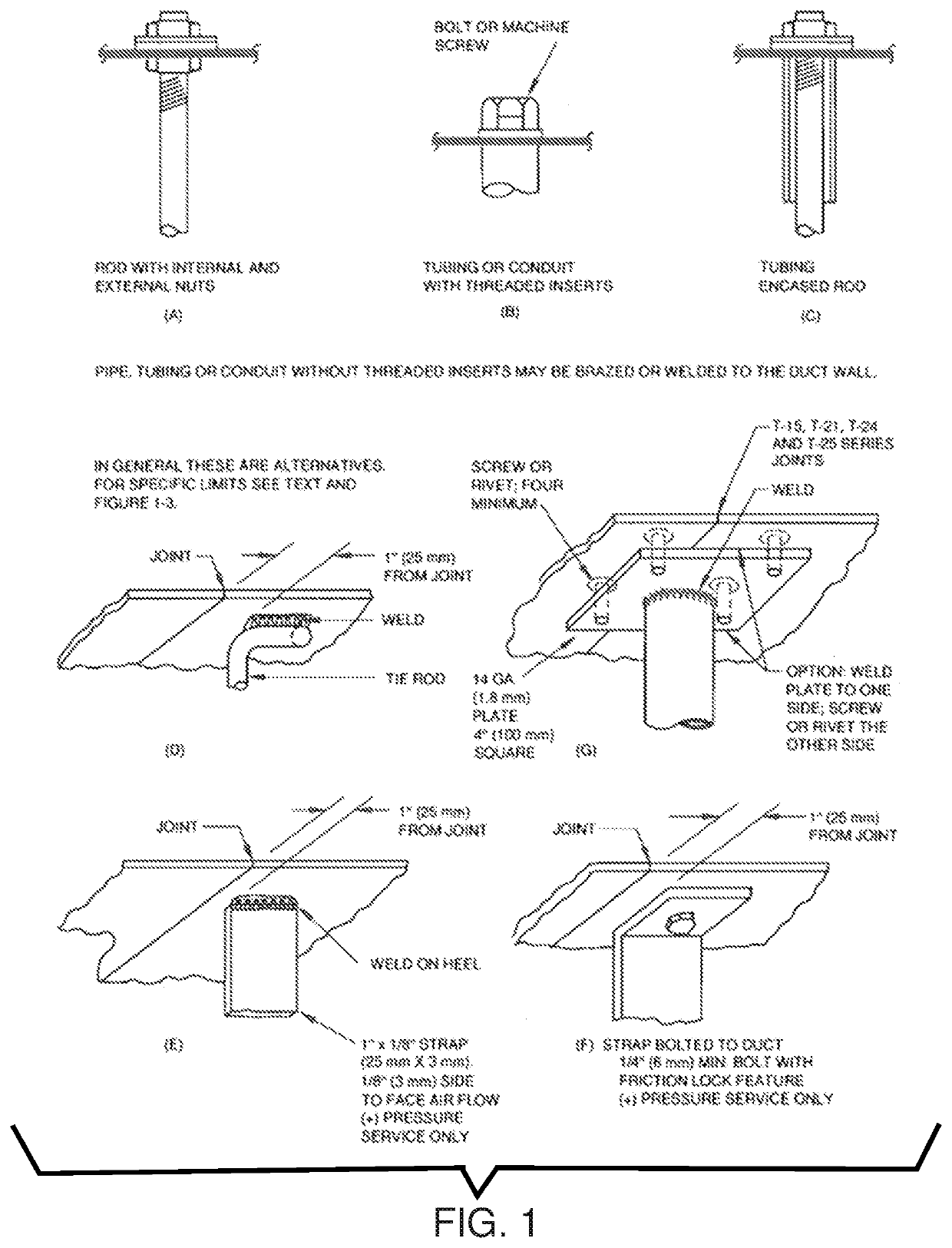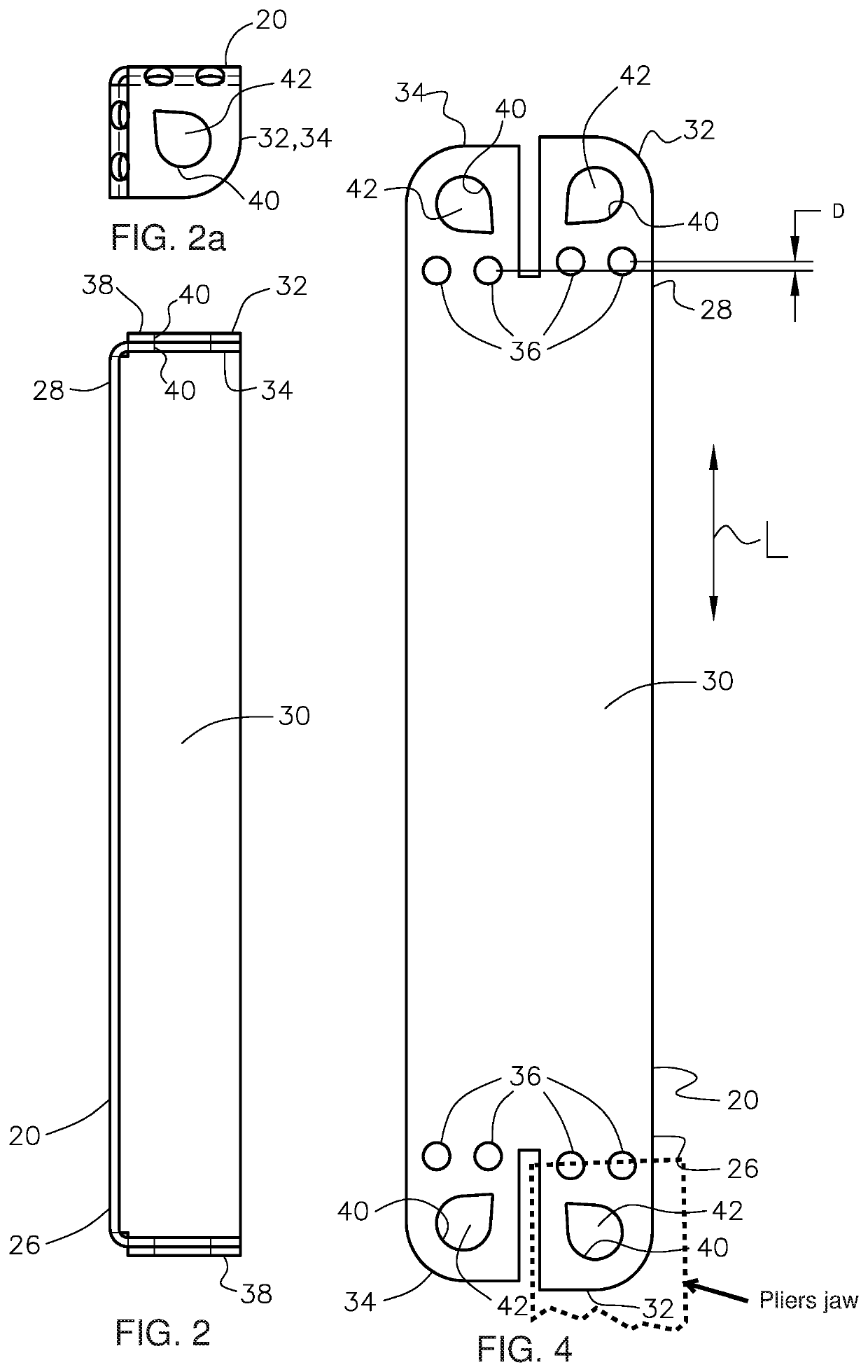Duct tie rod and method
- Summary
- Abstract
- Description
- Claims
- Application Information
AI Technical Summary
Benefits of technology
Problems solved by technology
Method used
Image
Examples
Embodiment Construction
[0063]Referring to FIGS. 1-20 of the drawings, wherein like numbers refer to like parts, several embodiments of a tie rod the invention are shown. Referring particularly to FIGS. 2-5k, a basic configuration of a tie rod 20 of the invention is shown, along with several optional hole configurations for receiving a fastener for attaching to a duct wall 22, that can be provided in a ready to use configuration, see FIGS. 2 and 2a, or a stackable shipping and storage configuration, see FIGS. 3, 3a, 3b, and 4. The tie rods 20 of the invention can be simply and inexpensively fabricated from sheet metal or other suitable material, including automatically, and are securely fastenable quickly and easily to duct walls 22, see FIGS. 7, 8, 9, 12-20, optionally by one person, without need of tightening nuts and bolts together from inside and outside of the duct 24, although that is an option, see FIG. 17. Optionally, the tie rod 20 can be fabricated in one of several straight, nestable configurati...
PUM
 Login to View More
Login to View More Abstract
Description
Claims
Application Information
 Login to View More
Login to View More - R&D
- Intellectual Property
- Life Sciences
- Materials
- Tech Scout
- Unparalleled Data Quality
- Higher Quality Content
- 60% Fewer Hallucinations
Browse by: Latest US Patents, China's latest patents, Technical Efficacy Thesaurus, Application Domain, Technology Topic, Popular Technical Reports.
© 2025 PatSnap. All rights reserved.Legal|Privacy policy|Modern Slavery Act Transparency Statement|Sitemap|About US| Contact US: help@patsnap.com



